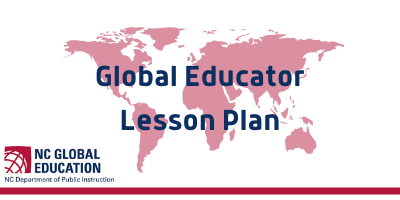GEDB Nonfiction and Haiti: Important Versus Interesting (Lesson 4 of 8)

Overview
Sometimes students get stuck in thinking every sentence written after the main idea is a supporting key detail. This lesson will look at the difference between an interesting detail and an important detail. *This lesson is the 4th lesson of an 8 lesson unit on non-fiction texts as well as Haiti. It can not stand alone and needs to be completed with the unit. This lesson was developed by Kate Quigley as part of their completion of the North Carolina Global Educator Digital Badge program. This lesson plan has been vetted at the local and state level for standards alignment, Global Education focus, and content accuracy.
Lesson Plan
Description
Sometimes students get stuck in thinking every sentence written after the main idea is a supporting key detail. This lesson will look at the difference between an interesting detail and an important detail. *This lesson is the 4th lesson of an 8 lesson unit on non-fiction texts as well as Haiti. It can not stand alone and needs to be completed with the unit.
Content
Learning Targets and Criteria for Success
I will distinguish the difference between an interesting detail and an important detail.
I will continue to build background knowledge about the hardships that the people of Haiti endured.
Supplies/Resources
Disease Breaks Out in Haiti- scholastic new article, http://www.scholastic.com/browse/article.jsp?id=3755299 ; reading notebooks, anchor chart for each group,
Learning Tasks and Practice
Mini Lesson:
The teacher will start the class period with a mini lesson for the whole class. The mini lesson will start with a reminder of the learning targets from the previous days lesson.
"Yesterday we focused on finding main ideas and their supporting details in our article about Haiti. Please turn to your neighbor and share some of those main ideas that we discovered yesterday during your small reading group time with me." Allow 1-2 minutes for sharing with their neighbor. The teacher will listen in to different pairs of students during this time. When the time is over the teacher will then share with the students some of the main ideas about the article they read on Haiti.
"I am really glad that I heard some of those main ideas about our article we read on Haiti. Understanding the main idea can help us understand more about our topic of Haiti. One thing that I did notice yesterday in our small reading groups, was that we had trouble with picking out the important details. For information to be considered a key detail it has to be connected to the main idea. In most non- fiction reading an author fills the pages with information that is important or key and also information that is meant to wow, amaze, gross out, or otherwise keep the reader reading. However, when we go to summarize a text, we need to sort through all the information and just present what is most important to the main idea. Let’s look at my article that I have that talks about South America."
The teacher will then display a chart paper with a non fiction article about South America. On an additional chart paper the teacher will make a t-chart and work with the students to sort out interesting details from important details. Once this whole group activity is complete the teacher will let students know that they will continue to practice this skill when they meet with the teacher in their small reading groups. Other students will contiue to work in reading rotations that are assigned to them from the start of this unit.
Small Group:
The teacher will meet with the different reading groups to read and discuss the article, Disease Breaks Out in Haiti. The teacher and students will take turns reading the article, stoping to discuss each paragraph for understanding. As a group, the teacher will help guide students to distinguish the differences between interesting details and important details. Students will complete a t- chart in their reading notebooks. The group will also need to add to their mini-poster concerns, issues, and problems about Haiti that was learned from reading the article.
Collecting and Documenting Evidence of Learning
The teacher will be able to use the students reading notebooks as evidence of learning for understanding the difference between important details and interesting details.